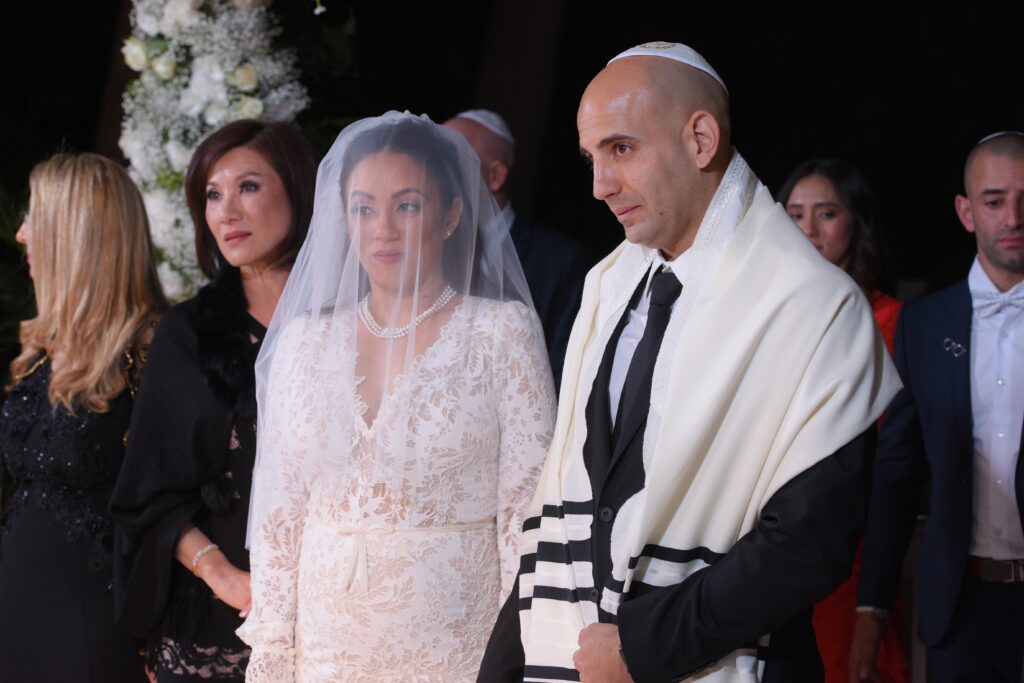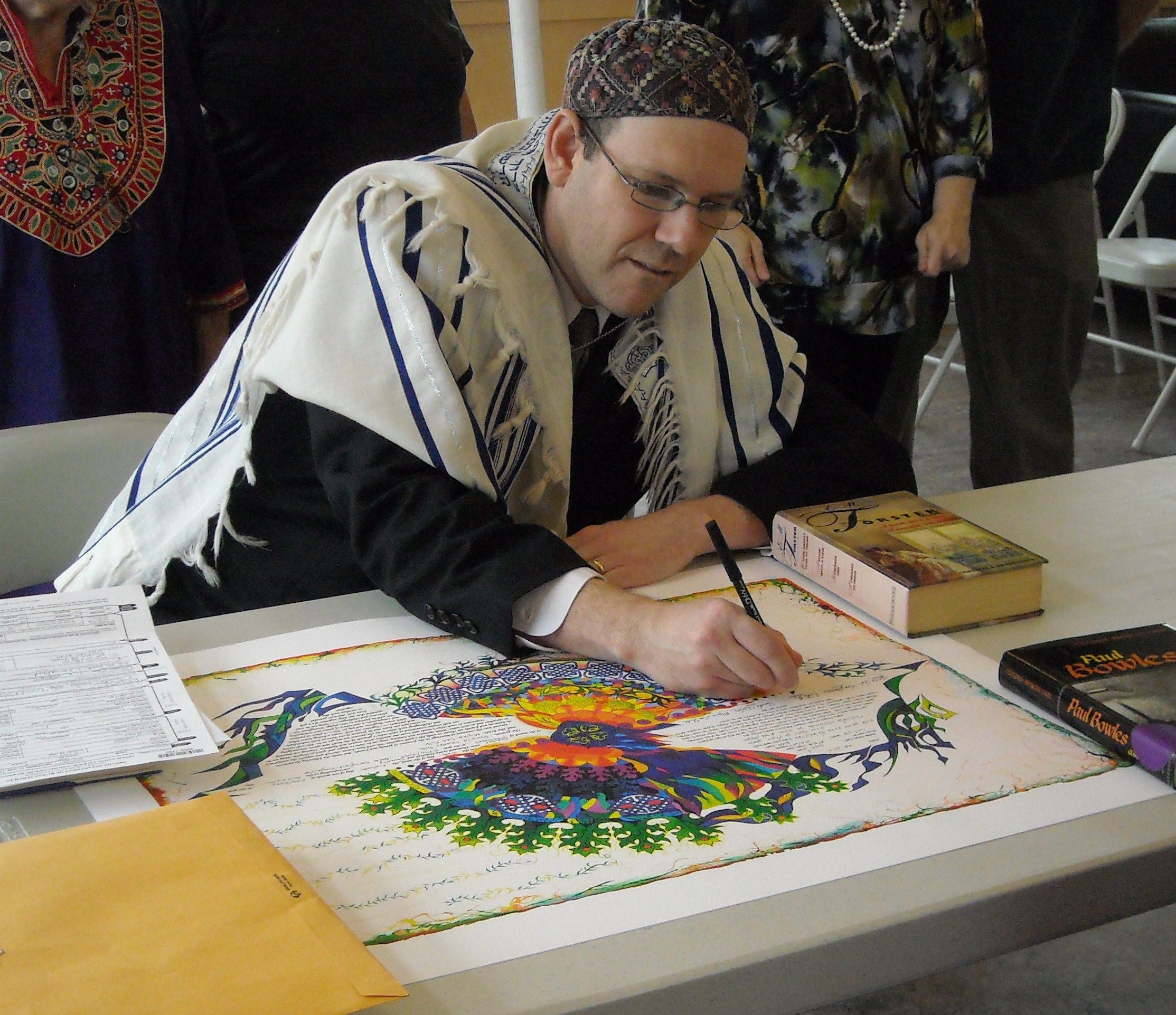This document functions as the T’nai b’kiddushin used in conjunction with a Conservative ketubah that does not include a Lieberman Clause. The bride and groom agree to abide by the decision of a rabbinic court in the event of divorce, thus abrogating the situation of agunah, a “chained woman” whose husband refuses her a religious divorce.
This is to certify that on the ____day of the month of _________ in the year ____, corresponding to _____________ day of the month of _____,______, in _____________,__, _______________, the groom, and _____________, the bride, of their own free will and accord have entered into the following agreement with respect to their intended marriage.
- Should a dispute arise that is not resolved and we do not live together as husband and wife and a process for the dissolution of the marriage is initiated in the civil courts, we agree to appear before the Joint Bet Din of the Rabbinical Assembly and the Jewish Theological Seminary of America, or such other Bet din as may be appropriate in the city or region of our domicile, and do hereby empower such Bet Din to decide any issues regarding the issuance of a get and effectuate that decision.
- The groom has furthermore made the following declaration to the bride:
“I will betroth and marry you, as we have agreed, according to the laws of Moses and the people of Israel, subject to the following conditions:
“If our marriage should be terminated by decree of the civil courts and if by the expiration of six months after such a decree, I give you a divorce (get) according to the laws of Moses and the people of Israel, then our betrothal (kiddushin) and our marriage (nissu’in) will have remained valid and binding;
“But, if our marriage shall have been terminated by decree of the civil courts and if by six months after such a decree I do not give you a divorce (get) according to the laws of Moses and the people of Israel, then our betrothal (kiddushin) and our marriage (nissu’in) will have been null and void.
The bride replied to the groom: “I consent to the conditions that you have made.”
Groom ______________________________________________________________
Bride_______________________________________________________________
We the undersigned duly constituted as a Bet Din have witnessed the oral statements and signatures of the bride and groom and indicate that they were made without compulsion and of their own free will.
Bet Din:
1) ______________________________________________________________________
2) ______________________________________________________________________
3) ______________________________________________________________________
Courtesy of the Rabbincal Assembly.













